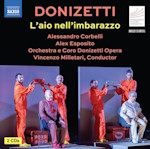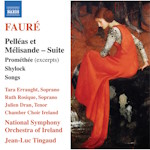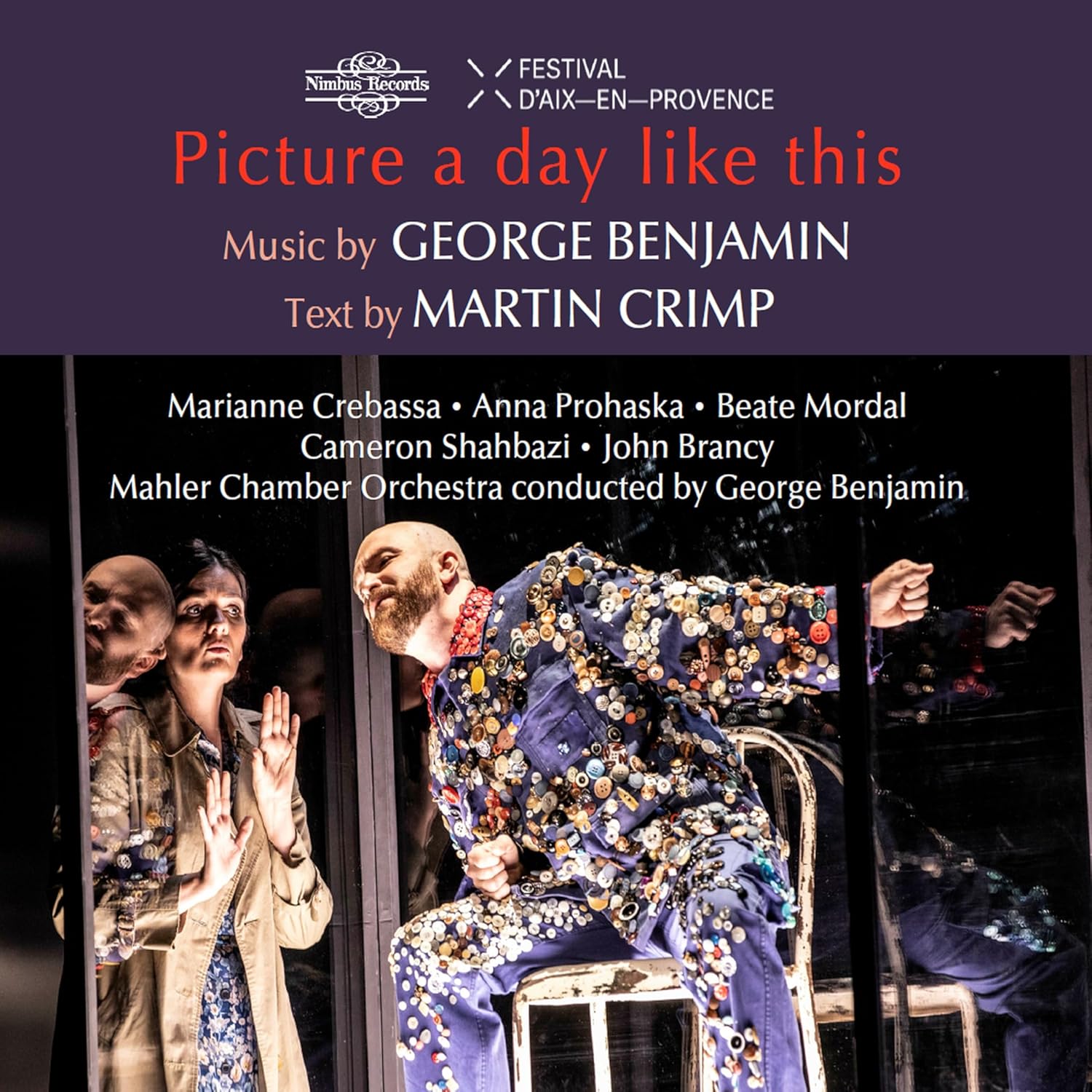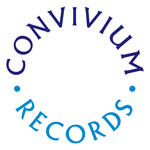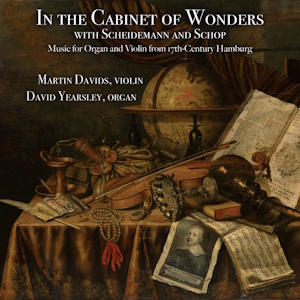
In the Cabinet of Wonders
Music for Organ and Violin from 17th century Hamburg
Martin Davids (violin)
David Yearsley (organ)
rec. 2023, Anabel Taylor Chapel, Cornell University, USA
False Azure Records FAR 4 [65]
This is my first encounter with the music of organist Heinrich Scheidemann and violinist Johann Schop, who lived and performed as a duo in Hamburg around the 1630s onwards. Scheidemann was a student of Sweelinck in Amsterdam but spent much of his career in St Catherine’s in Hamburg, admired for his colourful performances as much as for his flair for improvisation, qualities he shared with Schop, the first violinist from Northern Europe to have his works published, which they were in Amsterdam in two volumes called ‘t Uitnemend Kabinet (the Sublime Cabinet). The other cabinet, one that gives its name to the title of this disc, was the Hamburg organ, a veritable ‘Cabinet of Wonders’ with its many registers and orchestral sense of colour.
Though the organ-violin duo might seem an unlikely one, both men enjoyed great acclaim for their joint performances. David Yearsley, to whose notes I am indebted, reprints lines from two contemporary poets who extolled the duo in laudatory terms, so it seems they managed to balance the hugely divergent sounds of their instruments, or were adroitly placed in the organ loft of the church, to give an equal account of themselves.
The music of both men was often improvised so there are examples here of improvisations on popular themes of the day such as the fantasia on the chorale Werde munter, mein Gemüte with its long stretches of eloquently played organ solo. The joint improvisation called Intonatio is performed by Yearsely on the organ. The written music that exists offers opportunities for a balance between the two instruments such as in the elegance and free-flowing liquidity of Schop’s Intrada à 5. In Schop’s piece after Dowland’s Lachrime Pavaen there are splendid echo effects and myriad inventive decorations, and the organ operates as a supportive but active agent with its varieties of colour to which the violin responds with similar refinement. Talking of which, Martin Davids plays on a baroque violin by Ferdinando Alberti of 1750 and a reproduction baroque bow.
One can sense the grandeur and nobility both men could evoke but also successfully project in the church from the performance of Scheidemann’s Christ lag in Todesbanden. There are two verses, the first for organ and the second, with plentiful decorations, for duo. By contrast, the avuncular nature of the duo’s approach is on show in the organist’s improvisation after Bassano, Dic nobis Maria, where care over voices and subtlety over effects contribute materially to the success of the performance. Elsewhere there are many deft moments. I particularly liked the ebullience of the variations in Schop’s Pavaen de Spanje, and the splendid sound generally of Munetaka Yokota’s 2011 baroque organ at Corenell University.
Full specifications of the organ are given in the booklet and a moment-by-moment analysis of organ registrations of each track (tracked by timing) is also included. I’m not sure I’ve ever encountered such specificity before and it adds to the pleasure of this disc, which is as imaginative as it is thoughtful, as well recorded as it is expertly performed.
Jonathan Woolf
Availability: False Azure RecordsContents
Johann Schop (c.1590–1667)
Intrada à 5 (from Erster Theil newer Paduanen, Hamburg, 1633/1640)
after Alessandro Striggio (1536/37–1592); Nasce la pena mia (from ‘t Uitnemend Kabinet, Amsterdam, 1649)
after John Dowland (1563–1626); Lachrime Pavaen (from ‘t Uitnemend Kabinet, 1646)
Almande Mortiel (from ‘t Uitnemend Kabinet, 1646)
Præludium (from ‘t Uitnemend Kabinet, 1646)
Pavaen de Spanje (from ‘t Uitnemend Kabinet, 1646)
Heinrich Scheidemann (c.1595-1663)
Galliarda ex D
Christ lag in Todesbanden, 2 verses
sine titulo (from ‘t Uitnemend Kabinet, 1646)
after Giovanni Bassano (1561–1617) — Dic nobis Maria
Canzon in G
Englische Mascarada
Fantasia sopra Werde munter, mein Gemüte (improvisation by Davids and Yearsley on a chorale by Schop)
Intonatio (improvisation by Davids and Yearsley)


